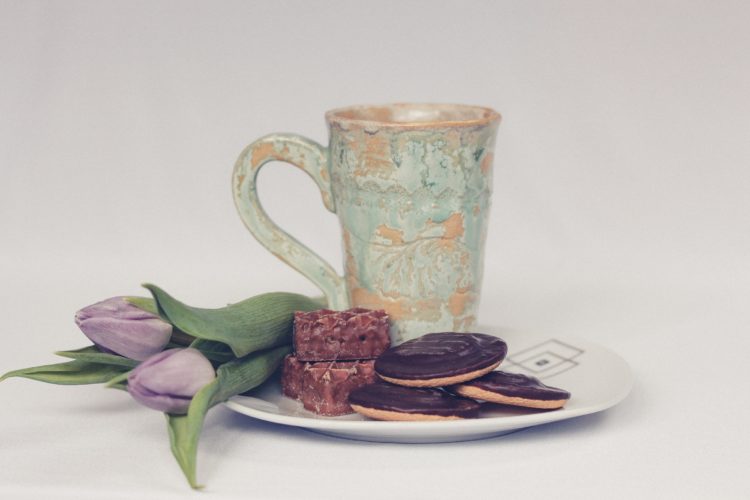You no doubt know Reuters, the global financial news giant that is now part of Thomson Reuters. But you might not know that when it launched more than a century ago, it was with the help of a flock of pigeons.
According to Tom Standage, author of “The Victorian Internet” (a book about pioneers of the telegraph), German-born innovator Paul Julius von Reuter was employed to cull stories from European newspapers and translate them into different languages for redistribution. Along the way, he realized certain stories were more valuable than others. Furthermore, as Standage recounts, “businessmen in particular were willing to pay for timely information.” So in the 1840s, Reuter began his own news distribution company, deploying some 40 homing pigeons to expedite the delivery of proprietary information hours before it could arrive by rail. Initially Reuter’s project operated between Aix la Chapelle (called Aachen in Germany) and Brussels, with correspondents posted throughout Europe. In Standage’s telling: After the daily stock markets closed, Reuters representatives copied the latest bond, stock and share prices “onto tissue paper, and placed them in a silken bag” fitted to a pigeon who flew the news to headquarters.

It is precisely details like these — the tissue papers, the silken bags — that Kari Howard, Reuters’ first Storytelling Editor, prizes, especially when they add meaning to the stories she helps shape for the global enterprise team.
To many Storyboard readers, Howard was known as the music-art-and-book loving editor of this site between 2016 and 2018. Others familiar with her long career at The Los Angeles Times may know she served as the assistant foreign editor there until becoming the editor of Great Reads/Column One.
According to journalist Patt Morrison, who introduces “How Far Can a Piano Fly” — a collection of narratives from the column’s first 30 years — Column One was a unique enterprise among newspapers, a foray into literary journalism where “the stylishness of fiction [is] paired with the authenticity of news.” Morrison explains how the column functioned as “a leisurely, considered account,” a respite from the “rat-a-tat-tat” of “who-what-when-where” news stories. Howard shepherded Column One for four years, during which she helped expand the portfolio of narrative journalism, including some Pulitzer Prize-winning work.
(Although Column One was suspended in 2017, during contraction and restructuring at the Times, it was relaunched in January 2019. Read the Storyboard interview with editor Steve Padilla.)
Morrison describes the best Column One stories as “yarn[s] that stay… with you,” created from “storyteller prose with substance at its heart.” That’s also a fitting description for what Howard has been nurturing since joining Reuters in early 2018.
Howard is based at Reuters’ headquarters in London, but she has guided projects with datelines including Borneo, Bangladesh, and Bergen. Her team’s reporting has been tackling unwieldy issues such as climate change, immigration, and Brexit. Yet the narratives always make clear how complex and, in many cases, ongoing challenges affect individual humans — people we feel we recognize and understand by the story’s end. To name a few examples:
- “From terror to triumph—a young Rohingya woman’s journey to the impossible” details the extraordinary and often tragic lengths traveled by 19-year-old Formin Akter to secure her identity card as new college student in Bangladesh.
- “Ocean Shock” is an encyclopedic, around-the-world series of deeply reported dispatches combining data analysis of fishing stocks and rising ocean temperatures with vivid testimonies from lobstermen, sardine fishermen and sea cucumber cultivators, among others, spotlighting the “climate crisis beneath the waves.” In August 2019 this series won the Society of Environmental Journalists highest honor — the Nina Mason Pulliam Award for Outstanding Environmental Reporting.
- “Wish You Weren’t Here: Postcards from the Edge of London in the Age of Brexit” reads like a narrated photo album chronicling the experiences of nine distinct citizens in the town of Dagenham; it serves as a primer on issues underlying England’s quest to leave the European Union.
While so much of the news can be scanned or skimmed, Howard’s infusion of Column One narrative journalism into Reuters reporting, which was built on fast-breaking financial news, has produced a slate of stories that keep readers engaged from start to finish. Recently Storyboard reached out to Howard, who guides stories by three principles: “Examine closely. Connect with people. Don’t rush.”
We asked her about the theory and practice behind her role as Reuters’ storytelling editor.
Why was Reuters keen to add storytelling to their news distribution model?
Global enterprise editor Mike Williams took a leap for Reuters in hiring me. In the past several years, he has established this cool new venture focusing on investigations and long-form explanatory reporting — hard-hitting enterprise that won Reuters several Pulitzers; in the past six years, it has won Pulitzers three times for international reporting. But my kind of storytelling is quite different, and I’m really excited that he took a chance and hired me to work with reporters on developing this skill. It’s been so gratifying to meet journalists who want to find different ways of telling stories at Reuters.
Can you tell us a little bit about how the editing process works for you? I was privy to some of the early ideas of the Brexit story, for example, but did you bounce ideas off of reporters or other editors to get at its ultimate form?
The Dagenham/Brexit story was a great collaborative effort with Andy MacAskill and Andrew Marshall, or “the two Andies,” as I called them. (I’m a big fan of the movie “Hot Fuzz,” which has two drug cops called Andy, their plural a riff on the drug-producing Andes Mountains.) We knew we wanted to do the story, about a longtime white, working-class neighborhood in East London that has seen huge demographic shifts with immigration, to focus on characters like a nonfiction “East Enders” soap opera.
So Andy and Andrew would keep going back to Dagenham and spending time with the people there, earning their trust. We wanted a good cross-section of today’s Dagenham: the longtime white residents, the early immigrants and the newer ones from Africa and Eastern Europe. The trick was to find the connective tissue that would link the portraits into a community, and also establish the community. Andrew found the catalyst by chance when he happened upon these photos of Lego models of buildings being demolished at the giant Ford plant that had once given Dagenham its identity. Turns out they were made by a young autistic man who would go to the demolition site with his grandfather, who once worked at the plant. That anecdote gave the whole story such heart.
Another great collaboration was working with Mari Saito on “A Cloudspotters’ Guide to Climate Change.” It was quite a complex narrative, weaving the story of a group of quirky cloud lovers on a rugged island off the coast of England with the scary science of clouds in the face of climate change. Pulling that off was a tightrope act, and the result, I think, is a magnificent piece of literary journalism that mixes love and loss, regret and hope. Diana Marcum, the winner of the 2015 feature-writing Pulitzer Prize, put it best in a tweet: “This story is everything: endearing people as real as if you chatted with them, fairytale landscapes, climate change and the joy of life itself. Jaw-dropping display of craft in weaving it together.”
Speaking of Diana, working with Mari reminded me of my collaboration with Diana at the Los Angeles Times on her prize-winning drought series. We would obsess over every word, read sentences aloud over and over to get the rhythm right. She’s an amazing young talent who gives me hope for the future of narrative journalism.
From the backstory of “Ocean Shock," included in the series, we know that Reuters journalist Maurice “Mo” Tamman, who lives on a boat in New York City’s Harbor, began noticing different patterns in which fish were and weren’t being caught. But creating a worldwide story, told in really intimate interesting episodes — how did that work? Did you invite Reuters journalists to submit stories ideas and then green-light the best, or did you corral Mo and Matt and Mari in a Skype call and talk it through?
You’re right — the whole series started with Mo on his boat. And then he spent months on the data that unfurled from that one little moment seeing the fish. I hadn’t even been hired yet. In fact, Mo and I first met at my Maine farmhouse as he was heading up to Deer Isle up in Downeast Maine to report on the lobster business and how its boom seems destined to end in a bust because of climate change.
Once we started talking, we realized this could be a bigger series, with global sweep, but told intimately. Mike Williams brought in Matt Green and Mari Saito, and we were a team: Mo and Matt and Mari and Kari. Usually we were scattered around the world, but occasionally we would have the best hours-long jam sessions at my little flat in London, riffing off new ideas for the stories. Those have been some of the happiest, most satisfying moments of my time at Reuters. And I’ve replicated it with other reporters, having them over for tea and baked treats while we talk about storytelling and story ideas.
How many times do the drafts go back and forth?
Numerous times. The first few times are all about the structure: How does the story want to be told? (One reporter at the L.A. Times called me the story whisperer, which I’ve always loved, because it has that sense of trying to tune into the story and find out how it wants to be told.) For instance, the climate-change stories have a lot of science in them. How do we incorporate that without taking us out of the moment of, say, a beautiful moment on an Enid Blyton island off England, like in the Cloudspotters story? It all becomes a matter of tension, playing the beauty off the terror.
Once we get a structure worked out, it’s all about the rhythm and the flow, down to the tiniest word. I read stories aloud, but another trick is to look at the story in newspaper column width, which makes you look at it differently, and see things you hadn’t noticed before, from flaws to stoppages in the flow.
You are working with gifted reporters—but how do you help them on find the structure and form of the story?
I’ve been so lucky to work with amazingly talented writers, both established ones like Mo and Andrew Marshall (who has won an astounding three Pulitzers), and younger ones like Mari and Zeba Siddiqui, who wrote a really moving piece about two Rohingya sisters who always dreamed of getting an education. That bittersweet piece, about a dream attained and a dream lost, and two sisters’ love enduring despite it all, ended up being part of last year’s Pulitzer-winning entry because of Zeba’s enormous heart and determination.
One reason I wanted to work at Reuters at this point in my career was to be a mentor to young writers who want to try something different from the breaking news the agency is known for. It’s been extremely gratifying to work with them on longer stories, yes, but also on short-form storytelling.
Speaking of longer stories, I’m quite jazzed about a story that Andrew is going to do later this year that I hope will be a true climate narrative, combining a historical tragedy with today’s climate change. Another high-wire act of storytelling.



